#v762
Explore tagged Tumblr posts
Text
“i always was a good thief.”

art by Liam W. (@V762cas on twitter & @V762art on tiktok)
#﹐﹑ᶻ𝘻﹐𝘯𝘢𝘯𝘪𝘵𝘢 𝘴𝘢𝘺𝘴 🏩﹐‹𝟯ʾ#this is so beautiful#i was in shock.#life altering#abigail marston#dutch van der linde#arthur morgan#javier escuella#john marston#jack marston#rdr2#red dead redemption 2#v762
4K notes
·
View notes
Text
When you wake up at 6 in the morning and reading a poem about leoklein (because fuck, why are there a lot of reminiscing about the ending of book 1) and read this poem
‘Here in the street,
The gold that no grey can dull.
Your eyes that shone,
Like the light behind each downpour.
Signaling a warmth to be found,
In the houses, and in you.
Here in the warmth,
So mundane, so intimate.
Like the shining sun after a lonely April pour,
The fact that you’re near.
I hope to ask, for permission to hide away with you,
From the solemn downpour.
From now and ever more.
But the sun came to fast,
And gone was my excuse, splendors unspent.
Then the flood came,
As sudden as it always did.
And now once again,
I am an outsider.
Watching the warmth from lit houses.
In the lone street with none to call mine.’
From: In the rain with you by V762 in ao3,
And then realized that I'm really in the fandom for these poems, and the angst. And I'm just like, why can't I escape this angst hellhole?
29 notes
·
View notes
Photo
Interesting map of our own galaxy. I wonder, though, what the ‘naked eye limit’ is supposed to represent.
Edit:
The farthest star we can see with our naked eye is V762 Cas in Cassiopeia at 16,308 light-years away. Its brightness is magnitude 5.8 or just above the 6th magnitude limit.
(Stackexchange)
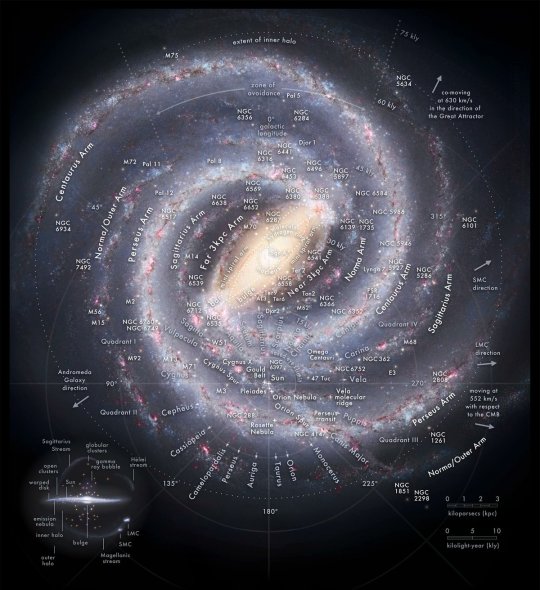
19 notes
·
View notes
Note
I miss our little interactions, so I will initiate more. I dont know if I've asked you this before but which do you like more: clouds or stars?
I do too!!
I’d probably say stars, I like clouds lots but space is definitely a huge interest of mine, and I find info about stars really cool!! :D (if I wasn’t going to be an artist I probably would’ve went into astronomy :3)
#oh oh!! here’s a fun fact about them!! :3#Ignoring occasional flare-ups such as supernovas the farthest star we can reliably see with the naked eye is the obscure V762 Cassiopeiae#-which is just visible under dark skies and is around 16300 light years away#oh and!! Astronomers believe there are probably somewhere between 10 sextillion (21 zeros) and 1 septillion (24 zeros) stars in total#mj answers#beloved friends#👾skulli#clouds are cool tho too!! love em
2 notes
·
View notes
Text
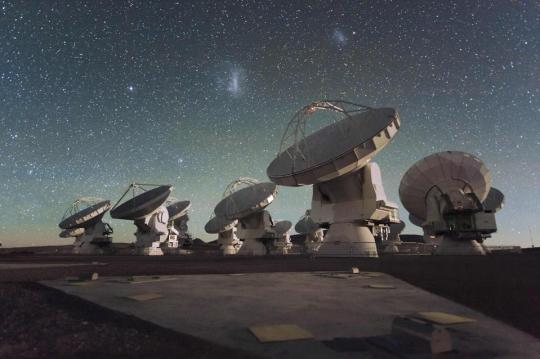


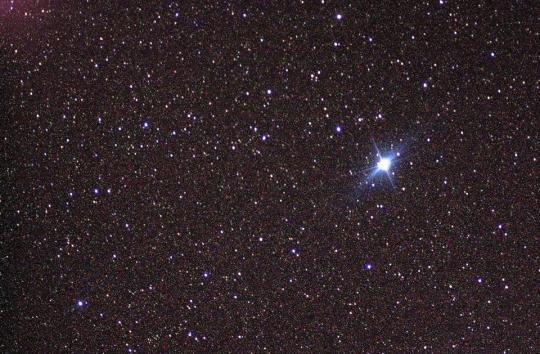
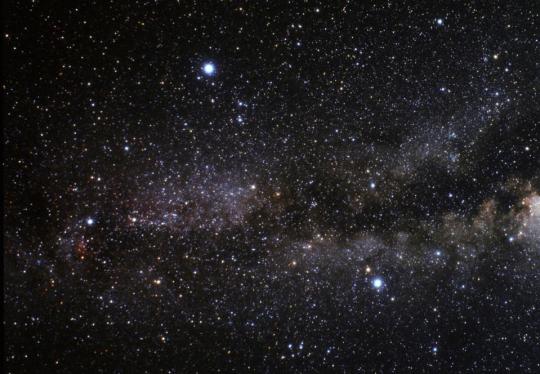
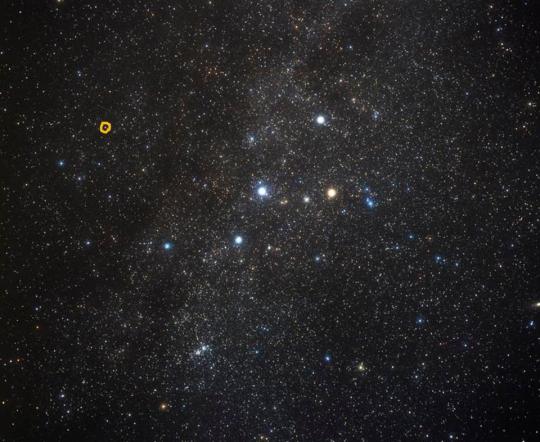
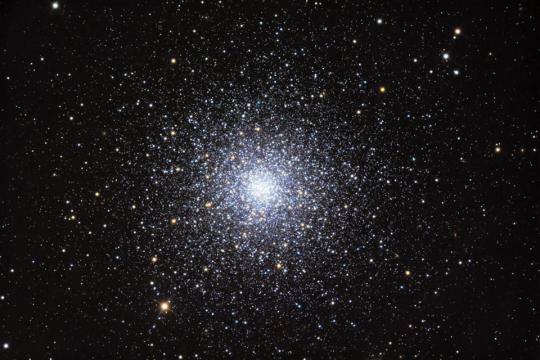
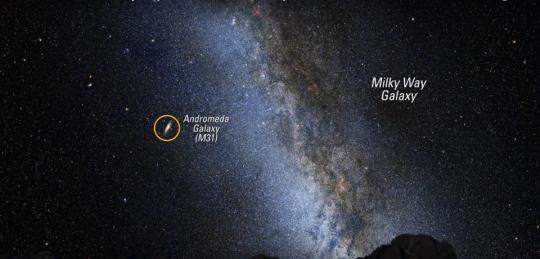
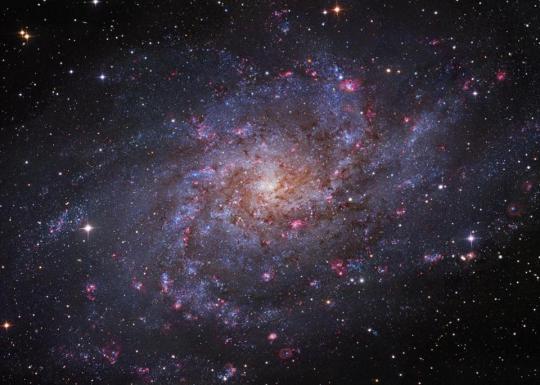
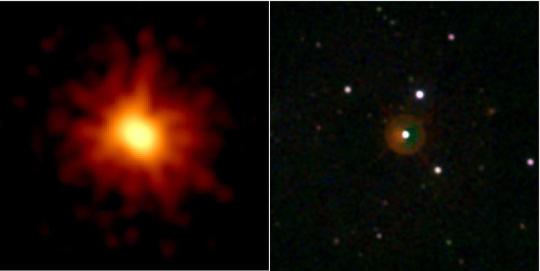
How Far Back In Time Can We See With Our Naked Eye?
"The oldest naked-eye starlight arrives from V762 Cassiopeiae, 16,300 years old: when humans first entered North America. Numerous visible globular star clusters are farther, with Messier 3 the most distant. It’s 33,900 light-years away, corresponding to the final demise of Earth’s Neanderthals."
How far back in time are we looking when we look at distant objects in the night sky? And what would they be seeing right now if they looked back at Earth? A fascinating way to think about the Universe.
172 notes
·
View notes
Text
How Far Back In Time Can We See With Our Naked Eye?
https://sciencespies.com/news/how-far-back-in-time-can-we-see-with-our-naked-eye/
How Far Back In Time Can We See With Our Naked Eye?
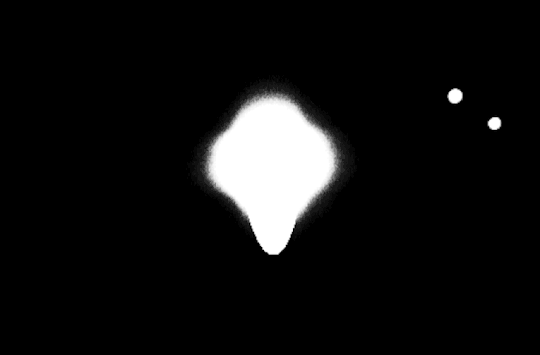
Whenever you observe an object, you aren’t viewing it in its present state.

When one of Jupiter’s moons passes behind our Solar System’s largest planet, it falls into the … [+] planet’s shadow, becoming dark. When sunlight begins striking the moon again, we don’t see it instantly, but many minutes later: the time it takes for light to travel from that moon to our eyes. Here, Io re-emerges from behind Jupiter, the same phenomenon that Ole Rømer used to first measure the speed of light.
Robert J. Modic
Instead, we’re held back while light travels through space.
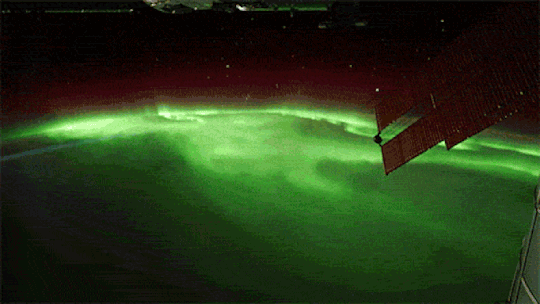
As shown here, the International Space Station flies over a spectacular aurora on display in Earth’s … [+] atmosphere. At its cruising altitude of around ~400 kilometers, the light we receive from the ISS here on the surface of the Earth is ~1.4 milliseconds in the past compared to events happening “now” on Earth.
NASA / INTERNATIONAL SPACE STATION
Visible artificial satellites appear as they were ~1-2 milliseconds ago.
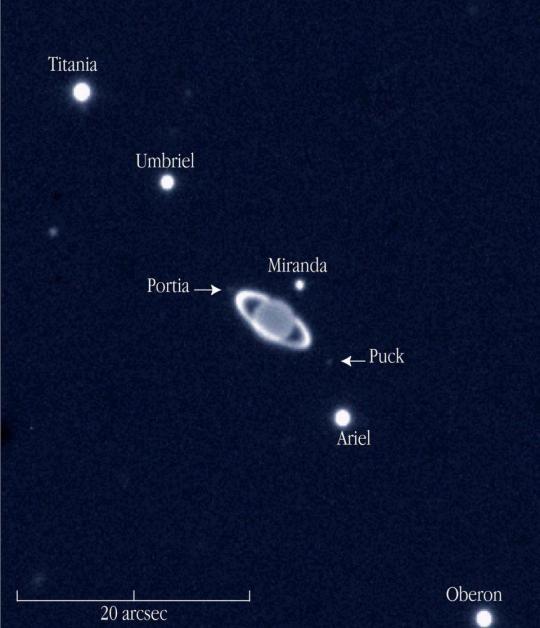
Whether seen with the naked eye or with modern telescopes, the light from Uranus takes approximately … [+] 159.6 minutes, or 2 hours and ~40 minutes, to reach Earth. Uranus, which has a prominent lunar system and its own rich set of rings, is the most distant naked-eye object in the Solar System.
ESO
The farthest naked eye Solar System object, Uranus, is 2 hours and 40 minutes in the past.
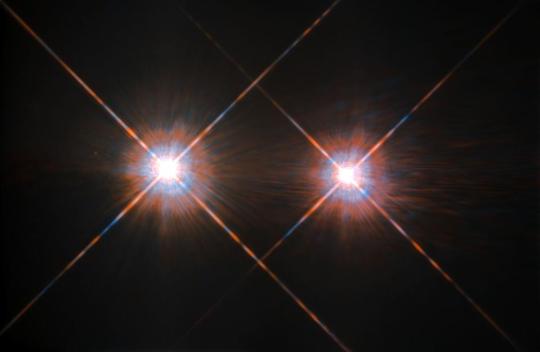
The two sun-like stars, Alpha Centauri A and B, are located just 4.37 light years away from us and … [+] orbit one another at between the distances of Saturn and Neptune in our own solar system. Even in this Hubble image, however, they are simply oversaturated point sources; no disk can be resolved. Proxima Centauri is approximately 0.2 light years away, only 4.24 light-years from Earth.
ESA/Hubble & NASA
The closest stars, in Alpha Centauri’s system, are ~4.3 light-years away; there, it’s early 2016 on Earth.
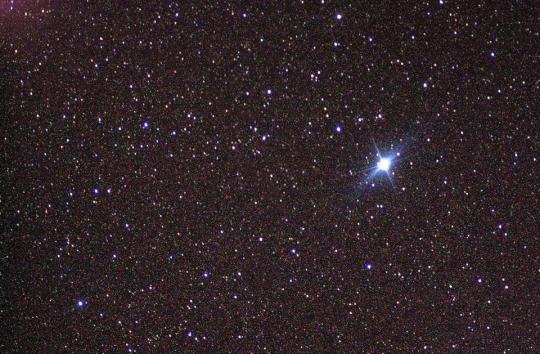
Canopus, normally visible from the Southern Hemisphere, is seen here from the International Space … [+] Station. Bluish-white in color, the second brightest star in the night sky is much farther than either the brightest (Sirius, at 8.6 light-years) or third brightest (Alpha Centauri, at 4.3 light-years) star, located 310 light-years away. It is intrinsically much brighter than either one.
NASA / ISS expedition 6
The second brightest star, Canopus, sees a pre-Industrial Revolution Earth: 310 light-years distant.
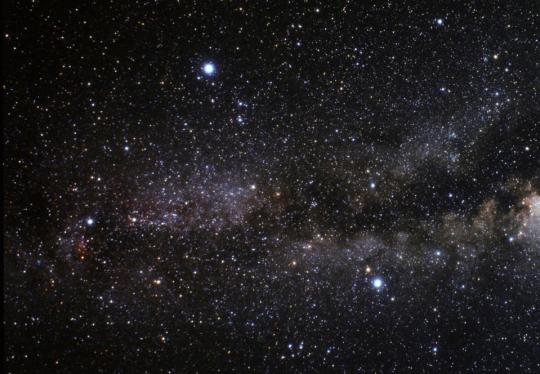
The three bright stars of the Summer Triangle: Vega (at top), Deneb (at left), and Altair (at … [+] right), contain seven fascinating and easily visible deep-sky objects from our perspective. The faint outline of the plane of the Milky Way can be seen passing through this collection of stars that dominates the summer skies. Vega is a mere 26 light-years away; Deneb is about 100 times as distant at 2,615 light-years.
NASA, ESA; Credit: A. Fujii
Deneb, anchoring the Summer Triangle, appears as it did 2,615 years ago; Athenian Democracy is a century away.
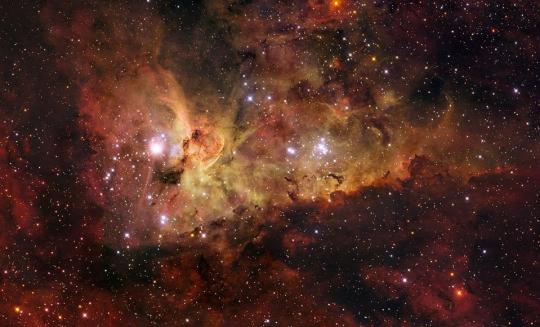
The Carina Nebula, with Eta Carina, the brightest star inside it, on the left. What appears to be a … [+] single star was identified as a binary back in 2005, and it’s led some to theorize that a third companion was responsible for triggering the supernova impostor event that caused a series of brightenings in the first half of the 19th century.
ESO/IDA/Danish 1.5 m/R.Gendler, J-E. Ovaldsen, C. Thöne, and C. Feron
Eta Carinae, 7,500 light-years away, witnesses the Black Sea’s flooding.
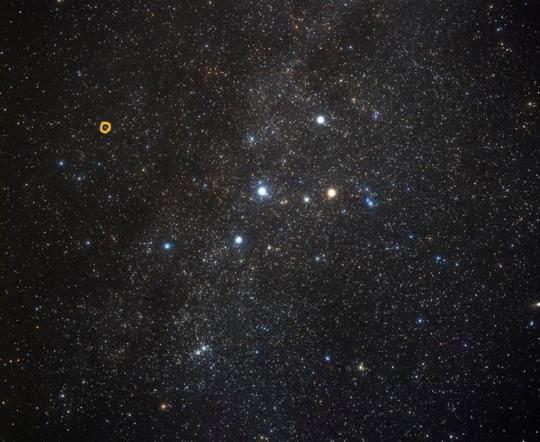
The constellation of Cassiopeia is familiar to casual skywatchers as a big “W” in the sky, but in … [+] truth the constellation contains many thousands of stars that are fainter and impossible to resolve without astronomical equipment. The farthest naked-eye star of all, V762 Cassiopeiae, can be found above the first “V” in the “W” shape, as annotated.
A. FUJII; annotations by E. Siegel
The oldest naked-eye starlight arrives from V762 Cassiopeiae, 16,300 years old: when humans first entered North America.
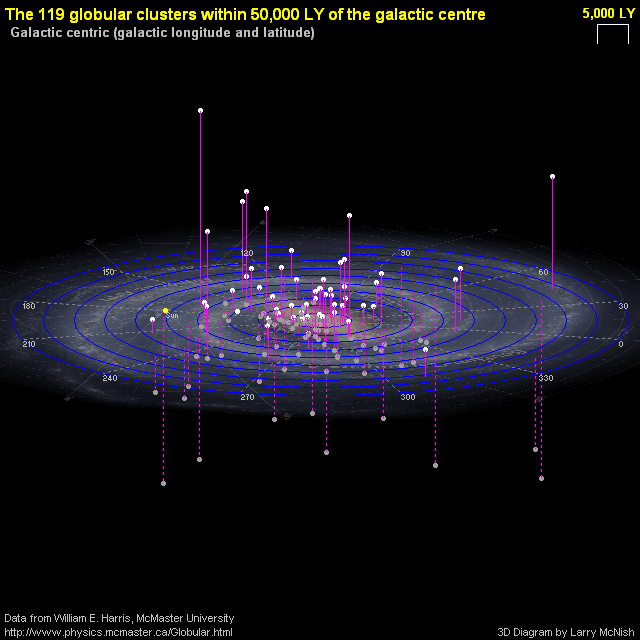
A map of the nearest globular clusters surrounding the Milky Way’s center. A few of the globular … [+] clusters within our Milky Way, such as Omega Centauri and the great globular cluster in Hercules (Messier 13) are visible to the naked eye, but there is a visible globular cluster that’s located farther away than all of the others.
William E. Harris / McMaster U., and Larry McNish / RASC Calgary
Numerous visible globular star clusters are farther, with Messier 3 the most distant.
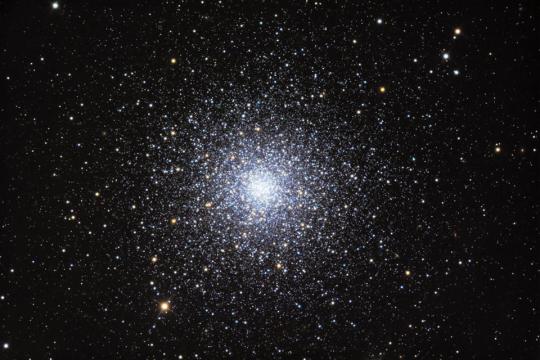
Messier 3, a globular cluster located 33,900 light-years away, as seen through a 24″ telescope. The … [+] stars within this globular cluster are approximately 11.4 billion years old, and it can be seen with the naked eye under ideal viewing conditions.
Adam Block/Mount Lemmon SkyCenter/University of Arizona
It’s 33,900 light-years away, corresponding to the final demise of Earth’s Neanderthals.
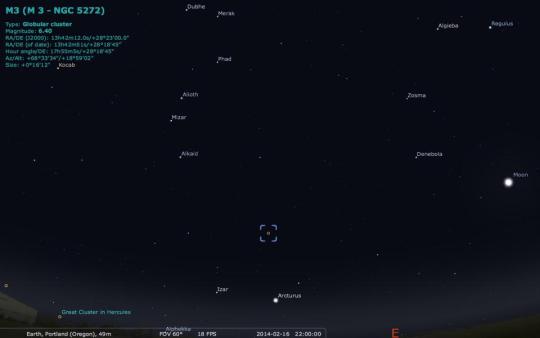
The location of globular cluster Messier 3, near the Big Dipper (top) and Arcturus (bottom). If you … [+] look at the star to the right of Alkaid, Cor Caroli, Messier 3 is located along the straight line connecting Cor Caroli to Arcturus. Messier 3 is the most distant naked-eye globular at an estimated 33,900 light-years away.
E. Siegel / Stellarium
Galaxies outdistance all other visible objects.
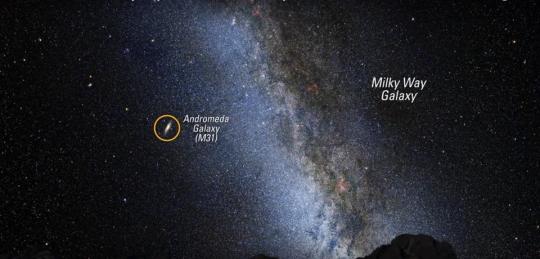
The largest galaxy in the Local Group, Andromeda, appears small and insignificant next to the Milky … [+] Way, but that’s because of its distance: some 2.5 million light years away. Easily visible under dark skies, it’s one of four galaxies external to our own visible with the naked eye, along with the Magellanic Clouds and Triangulum.
ScienceTV on YouTube / Screenshot
The Triangulum galaxy even bests Andromeda: 2.8 million light-years away, predating Homo Habilis.

The Triangulum galaxy might not be as massive or impressive as ourselves or Andromeda, but it’s the … [+] farthest object from Earth visible with the naked eye, and the third largest galaxy in our local group. At 2.73 million light-years away, they would not be able to find any evidence for the genus ‘Homo’ on Earth.
Robert Gendler, Subaru Telescope (NAOJ)
Only temporary, transient events are farther.
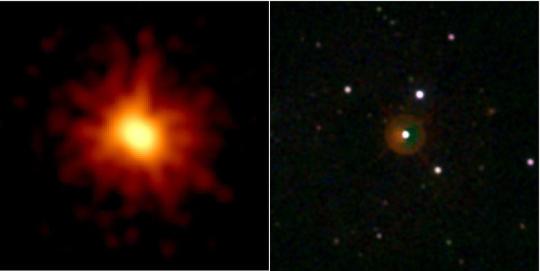
This dual image shows the emission of GRB 080319B, imaged by Swift’s X-ray Telescope (L) and, later, … [+] followed-up by the Optical/Ultraviolet Telescope (R). This was the brightest gamma-ray burst ever recorded at the time, and was so bright that, for about 30 seconds on March 19, 2008, it was visible to the naked human eye.
NASA/Swift/Stefan Immler, et al.
Gamma-ray burst GRB 080319B was visible for ~30 seconds on March 19, 2008.
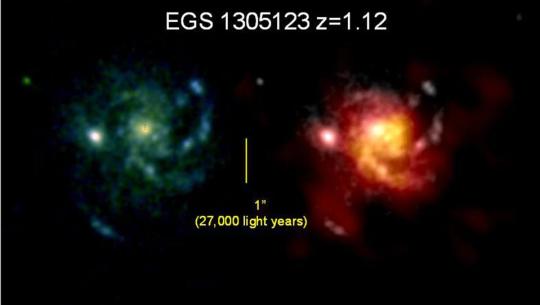
The distant galaxy EGC 1305123, seen in optical light (L) and ionized carbon monoxide (R), as imaged … [+] by Hubble. This galaxy is comparable, in many ways, to an early version of the Milky Way, and its light comes to us from about ~8 billion years ago, comparable to the most distant gamma-ray burst visible with the naked eye.
ESA/Hubble & NASA; Tacconi et al. (2010), Nature 463, 781
7.5 billion light-years away, its light predates Earth’s existence by ~3 billion years.
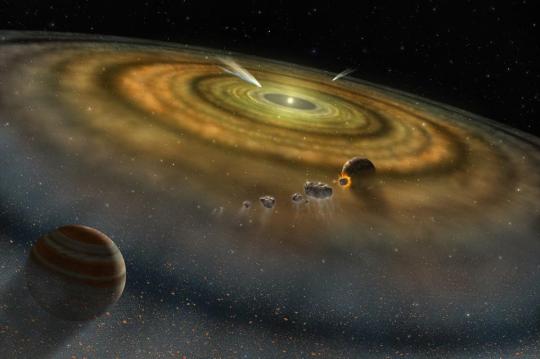
An illustration of the young solar system Beta Pictoris, somewhat analogous to our own Solar System … [+] during its formation. The Earth and Sun formed roughly 4.5-4.6 billion years ago; an object whose light must travel for 7.5 billion years before reaching our eyes would have no inkling of our planet’s existence for another ~3 billion years.
AVI M. MANDELL, NASA
Mostly Mute Monday tells an astronomical story in images, visuals, and no more than 200 words. Talk less; smile more.
#News
1 note
·
View note
Text
There were lots of terrible decisions made in LIS BTS but you know what ticked me off the most? The stars scene at the start of the third episode.
After Chloe turns on the star projector, Rachel makes a comment about how the light from stars is beautiful, but they’re so far away that by the time we see them, the stars have died.
That is a FALSEHOOD and I am HIGHLY disappointed with the writers.
The nearest star to Earth (excluding the Sun) is Alpha Centauri, which is approximately 4 light-years away (src). In other words, the light that we see from that star is only 4 years old. Other stars are comparable; I’d guess that most stars visible in the night sky are around 50-500 light years away. The furthest star visible with the naked eye is V762 Cassiopeiae, which is about 16,300 light-years away (src). The brightest stars, the ones that people can most reliably pick out even in skies with light pollution, tend to be the closer ones, since the further a star is away, the less likely its light is to reach Earth and the more likely that it’ll be blocked by something else.
Stars have a lifespan of several billion years. Our Sun is around 4.6 billion years old, and it’s predicted to live around 4.5 billion more years before it leaves the main sequence stage and becomes a red giant (src). Even then, it’ll continue to emit light.
In other words, the stars that you can see in the night sky are, most likely (one exception is the supergiant Betelgeuse), not dead, and likely won’t be until long after human civilization has ground to a halt.
This post brought to you by my extremely pedantic mindset and my long-lived fascination with space.
#meow rants#life is strange#before the storm#lis bts#queue#I had a space-themed birthday party when I turned 5#I own a book called Astrophysics Is Easy!#I KNOW this stuff
70 notes
·
View notes
Text
Chapter Three (The Morning After), Shattered Watch
Hi everyone; here’s a little peak and the links to chapter three of my Stony fanfic, Shattered Watch:
“Now, if you don’t mind, Rogers, I have a working time machine to build. While I do that, why don’t you…” Tony trailed off, waving his hand and looking around the room before his eyes caught on one of the crappy laptops the school provided for him before he made his own. Seriously, the thing was a piece of work. It had taken longer to run than it took for the light from V762 Cas to reach Earth, and it was supposedly the best on the market. Honestly, if his father would just listen, S.I. could easily get into and dominate the tech game. All Tony needed, was access to the R&D department and board meetings… but that was a thought for another time. “You,” Tony began again, walking over to the piece of junk and shoving it into Roger’s smooth hands, “can play with this while I’m working. Just press the button to turn it on, move the arrow in the screen with this, and double click on the letter ‘e’ on the screen for a truly amazing day. Just be careful not to spoil any cosmic plans for yourself, alright? Spoilers are the worst.” And then he was physically shoving Rogers out because that man needed to get out, like, yesterday.
“Stark,” Rogers glowered at him, beginning to fight now that the disorienting ramble of Tony’s words wore off.
“Bye!” he cheered, pushing Rogers the last of the way out the door and locking it behind the older man. If he were being honest with himself at this point, he didn’t really care if the man looked up his own future and tried to stop it. Good thing he was rarely honest with himself. As Tony walked back to the table, he could hear the outside churning, and lightning lit up his lab like a gunshot. He rubbed his wet palms against oil stained jeans, ignoring the way they twitched.
Thunder rolled through the sky like cars headed for an unstoppable collision, and Tony closed his eyes. Suck it up, the vicious voice in his head hollered. Stark men aren’t scared of stupid things. Get ahold of yourself!
The storm was upon them.
Tony had work to do.
Links:
AO3: https://archiveofourown.org/works/16985631/chapters/40675001#workskin
FanFiction: https://www.fanfiction.net/s/13146860/3/Shattered-Watch
Wattpad: https://www.wattpad.com/myworks/170388267/write/676443025
LiveJournal: https://alexrogersstark.livejournal.com/580.html
#stony#stony fic#stony fanfic#stony fanfiction#stevetony#stevetony fic#stevetony fanfic#stevetony fanfiction#stevextony#stevextony fanfic#stevextony fic#stevextony fanfiction#captain america/iron man#captain america/iron man fic#captain america/iron man fanfic#captain america/iron man fanfiction#fic#fanfic#fanfiction#Captain America#Iron Man#Avengers#Steve Rogers#Tony Stark#college au#time travel#time travel au
7 notes
·
View notes
Link
by cifnaf
A little bit of fluff for Valentine's Day ;)
Words: 557, Chapters: 1/1, Language: English
Fandoms: Star Trek: The Original Series, Star Trek
Rating: General Audiences
Warnings: Creator Chose Not To Use Archive Warnings
Categories: Gen, M/M
Characters: James T. Kirk, Spock (Star Trek)
Relationships: James T. Kirk/Spock
Additional Tags: Star Trek - Freeform, Star Trek: TOS, Fluff
1 note
·
View note
Photo
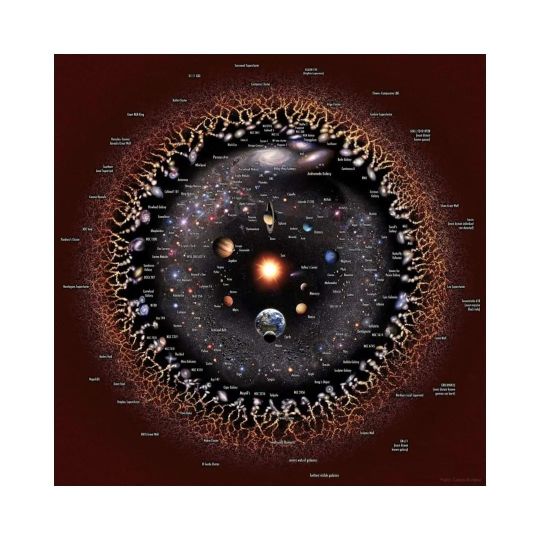
V762 Cas ये उस सबसे दूर के सितारे का नाम है जिसे हम अपनी नेकेड आँखों से यानि बिना किसी टेलिस्को��� की सहायता से देख सकते हैं, ये हमारी पृथ्वी से 16,308 प्रकाश वर्ष दूर हैं। ये 16,308 प्रकाश वर्ष दूर है इसका मतलब ये हैं कि जो सितारा हम देख पा रह�� हैं, यानि उसकी लाइट या दृश्य 16,308 साल पुराना है। भगवान कृष्ण का जन्म हमारे पुराणों और अभी द्वारिका में उपलब्ध प्रमाणों के अनुसार आज से लगभग 5130 साल पहले हुआ था। यानि जो सितारा हम देख पा रहे हैं, उसका प्रकाश या उसके इग्ज़िस्टेन्स का प्रमाण भगवान कृष्ण के जन्म से लगभग 11000 साल पुराना है। लाइट और साउंड की स्पीड का अंतर कई हज़ार गुना है यानि लाइट कई हज़ार गुना तेज़ है साउंड से… हम 16000 साल पुराना सितारा देख पा रहे हैं, और हो सकता है कि इन 16000 सालों के बीच कहीं वो सितारा बचा हो या न भी बचा हो। ऐसे ही अगर हम भविष्य में कोई ऐसी तकनीक खोज पाएँ कि जैसे हम 16308 साल पुराना सितारा देख पा रहे हैं वैसे भविष्य में भगवान कृष्ण द्वारा कही गई गीता ख़ुद उनके मुख से सुन पाएँ… क्यूँकि आइन्स्टायन के सिद्धांत के अनुसार इस संसार में कुछ भी नष्ट नहीं होता…. जो कहा गया है, वो कभी तो सुना जाएगा… नीचे जो तस्वीर है, वो हमारी नेकेड आँखों से देखे जा सकने वाले ब्रह्मांड की है… https://www.instagram.com/p/CbZIWh1p3GP/?utm_medium=tumblr
0 notes
Text
0 notes
Text
人眼可看到一萬光年外的恆星,但距離太陽系最近的恆星卻看不到
晴朗的夜晚仰望星空,滿天的星斗都對我們眨���睛,那麼哪顆星星距離我們最近呢?除了月亮這個星球之外,就是金木水火土和天王星這幾大行星了。而恆星之中,太陽距離我們最近,當然它不能算夜空中的星星,那麼夜空中的恆星哪個距離我們最近呢?是最亮的天狼星嗎?不是的!天狼星距離我們大約8.6光年,而有一顆恆星距離我們只有4.22光年,它就是比鄰星。 比鄰星是距離我們最近的恆星,離太陽只有4.22 光年,相當於399233億公里,但是我們只用肉眼卻看不見它,要知道,人類肉眼可見的恆星大部分都在半徑3000光年以內,最遠可見的恆星則遠在一萬光年之外,在北半球星空的仙後座裡,有一顆亮度約為4.5等的星星,名叫仙後座ρ,它距離我們大約有11650光年,是比較容易看見的遙遠恆星,而在這個星座裡還有一顆名叫V762的變星,亮度為5.8等,距離地球16300光年,被認為是肉眼可見最遠的恆星。 比鄰星距離我們只有4.22光…
View On WordPress
0 notes
Link
Nouvelle annonce en Tunisie
Résidence la belle v762 A vendre chez TPS immobiliere Hammamet, des appartements de haut standing bien situé dans une résidence à Hammamet Nord, à 500m de la superbe plage et à 5 mn du centre ville de Nabeul. La résidence est un immeuble résidentiel d’architecture moderne. Les appartements sont dotés de toutes les commodités de luxe. Revêtement des sols en marbre blanc pour salon et couloir, grés dans la masse de 1 er choix pour les cuisines aussi la salle d'eau et la salle de bain. Une cuisine installée et équipées d’une plaque, un four, et une hotte aspirante de qualité. Placardes et dressings agencés, staff décoratif, menuiserie en bois noble. Piscine collective dans la résidence, une place de parking au sous-sol et des celliers La sécurité de ces appartements a été étudiée : accès sécurisé aux halls d’entrée par caméra de surveillances et système de contrôle d’accès ...ect. Type des appartements: S+1: 170 000, superficie: 88m² S+2: 180 000, superficie: entre 92 m² et 120m². S+3: 240 000 - 350 000, superficie: entre 140 m² et 250 m² Nos agents sont à votre disposition pour toutes informations et conseils nécessaires afin de disposer du bien. Veuillez contacter Mme SIRINE sur ces numéros : 52080909, 52631000
0 notes
Link
ThemeForest - Florida v7.6.2 - Multipurpose Responsive Theme - 6609201
DEMO
Florida is a Responsive, Retina-Ready Wordpress theme with a minimalist, simple, elegant and clean style, a strong focus on contents and readability. It presents a modern business solution. Florida is suitable for multipurpose websites such as business, company, portfolio or blog. It is superbly responsive adapting to any kinds of smart phones and mobile devices. Code is easy to modify and understand so you can personalize it in the easiest way. Florida is fully integrated with the visual composer. This awesome page builder lets you to create complex layouts of your pages and posts with simple drag-n-drop interface. You can create easily any page layout using extended Visual Composer and our flexible shortcodes
0 notes
Photo
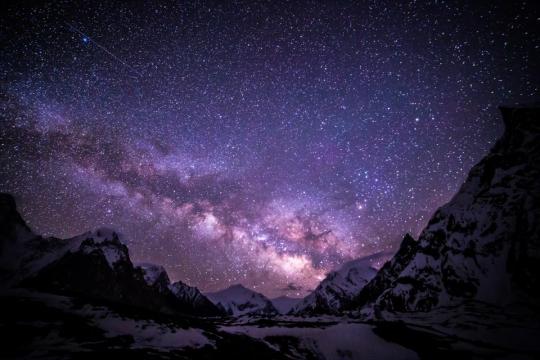
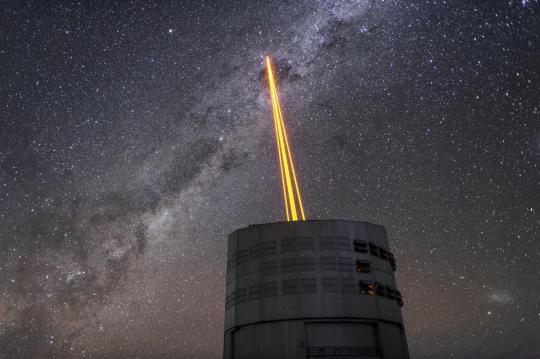
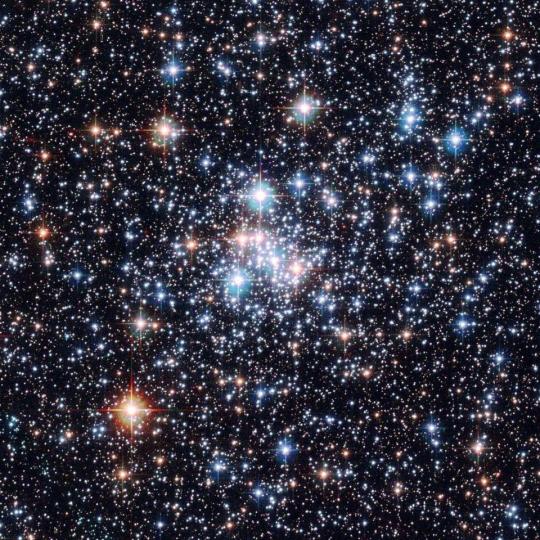
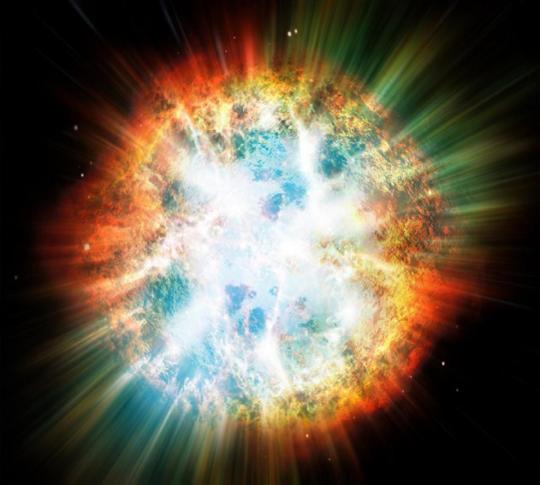
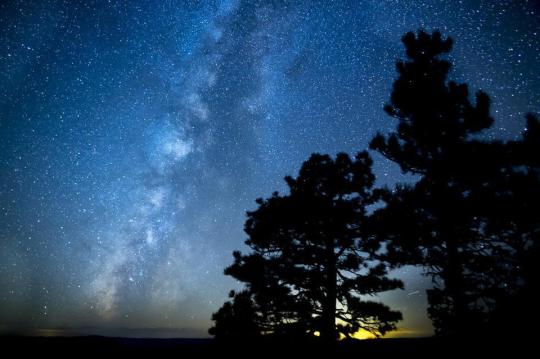
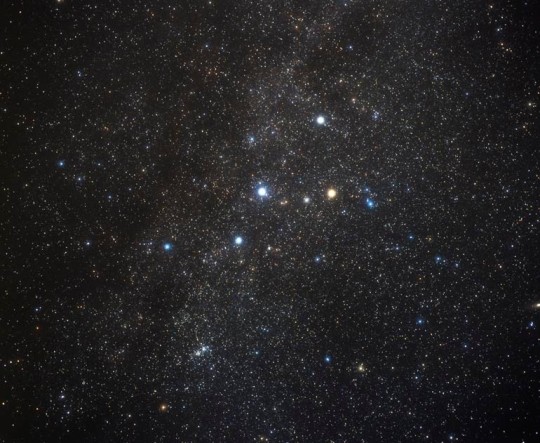
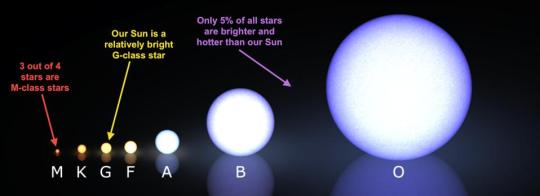
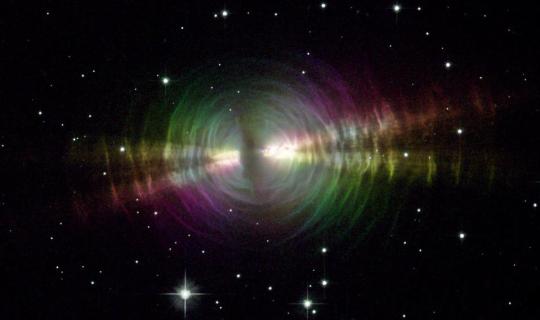
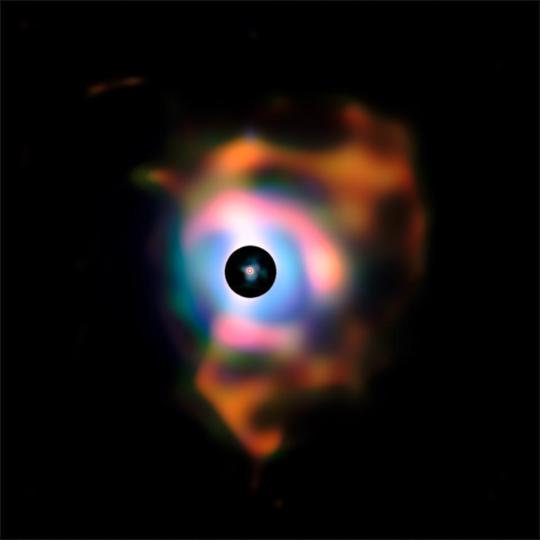
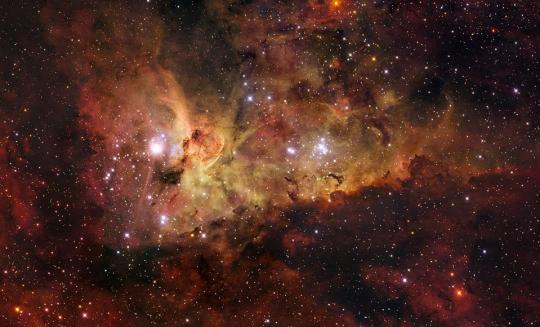
Are Any Stars Visible In The Night Sky Already Dead?
“Under ideal conditions on Earth, approximately 9,000 stars possess naked-eye visibilities. The closest one is Alpha Centauri: 4.3 light-years away. The farthest is V762 Cassiopeiae, some 16,000 light-years distant. Overwhelmingly, most stars in existence are the lower-mass, longer-lived stars. But the brightest ones are the easiest to see: the giants and supergiants.”
The stars visible to the naked eye aren’t being seen as they are today, but rather as they are when their light was emitted: many years ago. Some of the stars are only a few light-years away, while others are thousands of light-years distant. That means, when we look at them, we’re seeing them as they were approximately that many “years” ago. It’s often noted that some of these stars may have died in the intervening time, and that means we might be looking up at a star whose light is still on its way, but which is no longer shining.
But is that actually true? It’s a question that we can’t answer for certain, but we can calculate how probable this scenario is. Time to learn what the odds are, according to science!
50 notes
·
View notes
Photo
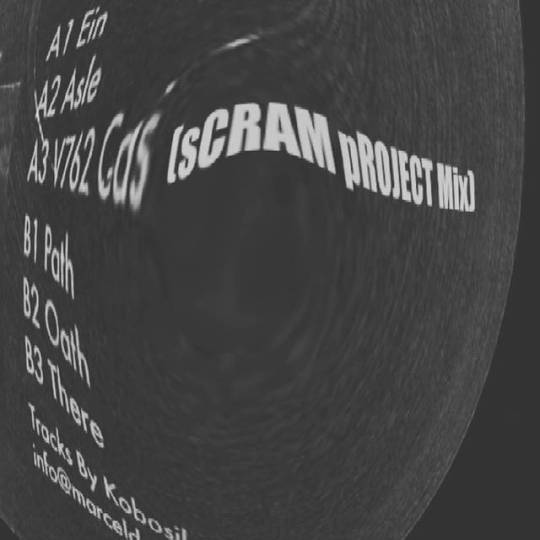
Kobosil - v762 cas (sCRAM pROJECT Live Mix) is ready to hit and flashback you some time in past... Catch it free download on next LINK: https://drive.google.com/file/d/0BwxNl60TUtuBWFNTRnotdGF2ZTg/view?usp=drivesdk #techno #technolife #technofamily #bootleg #livemix #acid #acidtechno #remix #flashback #kobosil #scramproject (at Tsaritsyno, Moskva, Russia)
#scramproject#acidtechno#technofamily#bootleg#techno#remix#flashback#technolife#livemix#acid#kobosil
0 notes